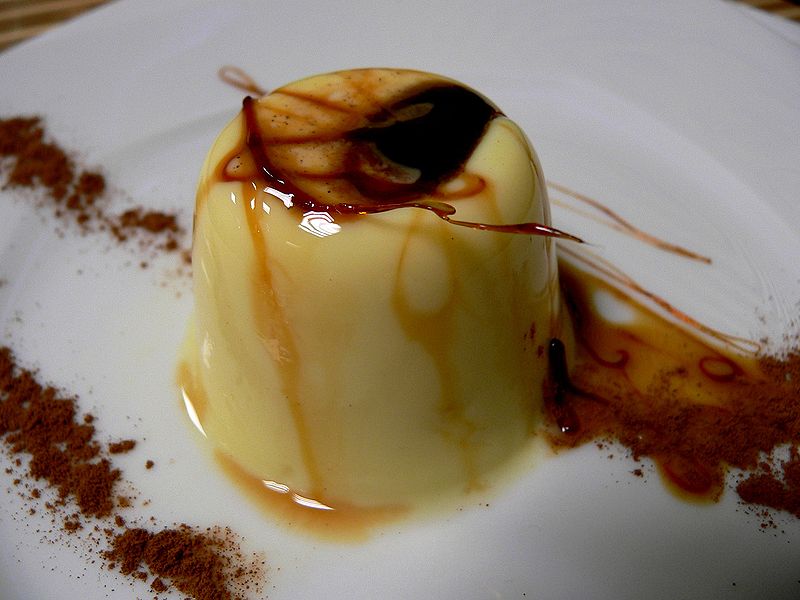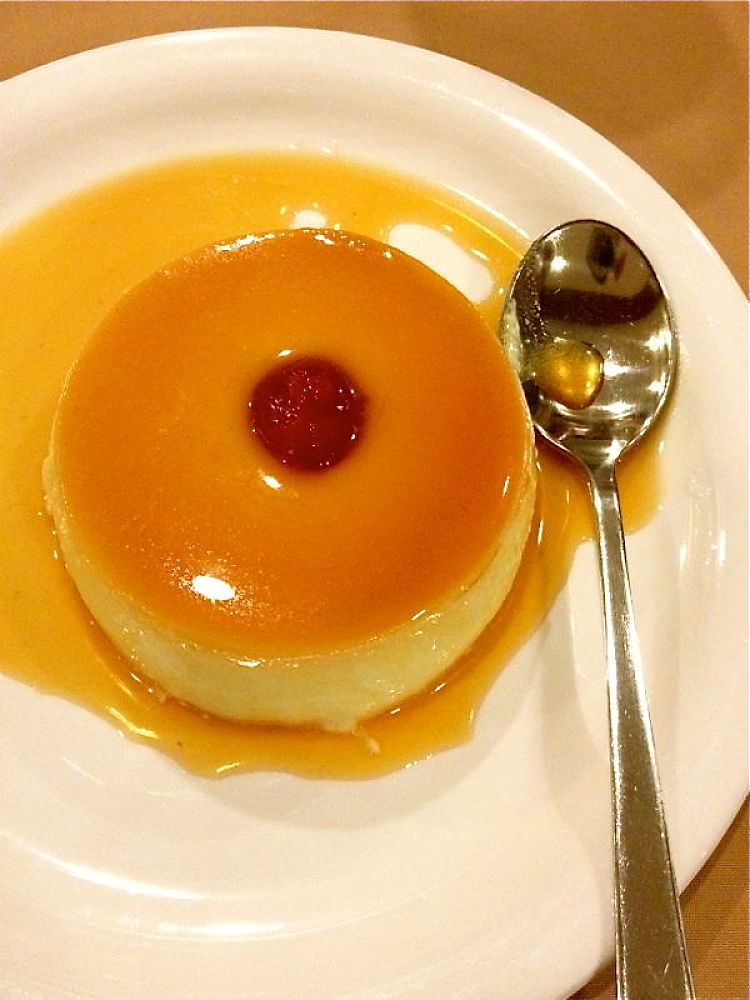How to Make Custard and Best Homemade Custard Recipes and Tips
Custards are one of those beautiful homemade desserts that rewards the effort with a unique taste and texture that transcends the tired, limp yellow stuff that masquerades as custard in the supermarket. Homemade custard is cheaper and doesn't contain any additive, preservatives, fake eggs, artificial flavours and colours and flour-based thickening agents, that and in many of the commercial custards. Also, homemade custard tastes much richer and is a lot creamier than bought custards and you can make various varieties to suit your taste and dishes you are preparing. Just look at the ingredients list - why use that junk when custard is so easy to make and healthy being based on milk and eggs.
The basic ingredients for custard are eggs, milk, sugar, and optionally cream. Custards are very versatile and can be baked in desserts or used as a hot or cold sauce or a sweet treat, and custard ice cream is heavenly! You can add all sort of flavours including the traditional vanilla beans, fruit, chocolate, liqueurs, and whatever you can dream of. Forget the prepared stuff, check out the custard powder and read on to find out how easy it is to make delicious homemade custard using the recipes, tips and step by step guide provided. There is also a wonderful list of variations to inspire you to create your own unique variety. There are some 'cheat' methods to eliminate those potential disasters that may occur as you learn, including filtering the custard to remove lumps and egg which may not have blended into the mixture properly.


What is Custard?
Custard is made by blending, heating and slowly cooking a mixture of egg yolks, milk and a little sugar and cream (optional). The main variation is thickness with thin custard being used for sauces and thicker consistency for adding to slices and pies, or to dessert made by adding fruit to custard in a serving bowl. Custard is also added to large and small tarts and used for making éclairs and slices.
Traditionally, a double boiler is used when making custard, however it can be simply prepared in a saucepan, taking special care to use very low heat and stir constantly and thoroughly so that it does not curdle and form lumps. You can also use a bowl inserted into a saucepan of simmering water, so that the bowl id above the surface of the water.
One important tip is to always whisk the sugar and egg yolks in a completely separate mixing bowl, and then pour the warm cream or milk into the mixing bowl, Don't try adding the egg yolks directly to the saucepan otherwise they may start to cook and scramble. Once the sugar and eggs have been whisked into the milk, pour the mixture back into to the saucepan. The custard is then cooked very slowly, mixing continuously until it thickens to a smooth and creamy consistency.
For a very rich custard and for thick custard in desserts, use double cream. For a lower fat version, you can replace the double cream with single cream, a mixture of cream and milk, or just full cream milk.
At the end of the article are a number of variations for beautiful flavoured custards such as chocolate custard or orange custard.
What you need
To make creamy and smooth stirred and baked custards, you will need to have the following:
- A double boiler, or bowl suspended over a large saucepan of water, or simply a saucepan
- Two mixing bowls
- A large fine sieve
- A wooden spoon
- A large jug for the completed custard
How to make custard
Start by splitting a vanilla pod length ways using a small knife, and scoop out the seeds. Place both the seeds and the pod into a small saucepan. Add along about 1 pint (570 ml) double cream (or use single cream or creamy milk for pouring custard). For a thick custard the double cream is best. Slowly bring the cream or milk mixture to simmering point over a low heat.
While the cream or milk mixture is warming, whisk 6 large egg yolks, 2 level teaspoon of cornflour and 2 oz (50 gm) golden caster sugar ingredients thoroughly in a medium sized bowl. A balloon whisk is ideal for this. The egg yolks work as a thickening agent aided by the small amount of cornflour (about 2 level teaspoons). This secret addition prevents curdling by stabilising the eggs and reduces the mixing time.
Remove the vanilla pod from the hot cream and discard. Start whisking the egg mixture continuously with one hand, and slowly pour in the hot cream and milk mixture into the bowl, mixing all the time.
When all the cream has been added pour the mixture back into the saucepan using a spatula to ensure it all transferred. While applying gentle heat, continue whisking until the custard is smooth, thick and creamy, making sure you keep the bottom layer in the saucepan well mixed, as this is where lumps start to develop. The custard will be ready just before it starts to simmer. If it is overheated and becomes grainy, simply transfer it to a bowl and start whisking until it becomes smooth again. The next secret is to pour the hot custard into a jug or bowl through a fine filter. This is cheating but it will remove the lumps and any egg that has not blended in properly. Cover the top of the jug with plastic film and leave to cool. If you want to re-warm it later for serving, remove the lid, pour it into a medium size bowl over a pan of barely simmering water.
Tips for Making Perfect Custard
If your custard is lumpy or has an uneven texture, the custard is probably being cooked too quickly and you cannot mix it properly.
The custard lining the bottom edge of the saucepan will heat and cook rapidly as its in contact with the heated surface of the pan.
If this bottom layer of custard is missed when you are mixing it will form hard lumps.
If you are not confident about the mixing and heating then use a double saucepan, cook the custard in a bowl suspended over a saucepan of simmering water or use a heat diffusing mat.
One secret to perfect stirred custard is to cook it over medium-low heat in a large saucepan. Keep stirring constantly with a wooden spoon. Test to see if it has started to thicken until it coats the back of the spoon. Draw a finger across the spoon surface and if it leaves a trail the custard is ready.
Stirring re-distributes the heat evenly through the mixture so the custard doesn't become too hot, especially at the bottom, and start to curdle.
Strain the custard when hot through a fine sieve into a jug. This removes any bits of egg that may not have been properly combined, and ensures that the custard is as smooth as possible.
Custard Variations
Chocolate custard - Add 2 oz (55 gm) of grated dark chocolate to the warm cream and milk mixture before adding to the beaten egg yolks.
Orange custard - Replace the vanilla pod, with the finely grated zest of 1 orange.
Liqueur custard - Add 2 - 3 tablespoons of brandy, kirsch, or any other liqueur to the finished custard and stir well.
Toffee custard - Add 50g of finely chopped toffee to the prepared custard and mix well.
Coffee Custard - add 1 tablespoon of Espresso powder or brewed coffee
Mocha Custard - add 1/3 cup cocoa powder; 1 cup Sugar; 1/4 cup Butter; 2 teaspoons Espresso powder. Add when preparing the custard.
Pineapple Custard - Stir 1 cup canned crushed pineapple into the warm custard.
Custard Recipes
The following recipes provide a range of options for you to try. You can make your own variations.
Low Fat Pouring Custard - Without Cream
Ingredients
- 4 egg yolks
- 1 vanilla pod
- 3/4 pint (420 m1) of milk
- 3-4 tablespoons of caster sugar
Method
Pour the milk into a large heavy saucepan. Split the vanilla pod down the middle and scrape the black seeds and the pod to the milk. Heat the milk using a moderate heat setting until it just starts to bubble around the edge. Remove the pan from the heat, cover with a lid and set aside to cool for 1S-20 minutes. Then remove the pod and discard. Using a medium size mixing bowl, beat the sugar into the egg yolks until the mixture is light and creamy. Gradually pour the milk, flavored with vanilla, into the sugar and egg yolk mixture in the mixing bowl, stirring continuously. Next, put the mixing bowl on top of a pan of hot water, heated to just below boiling point. Cook the custard, while stirring for 10-1S minutes, until the custard thickens. Remove the bowl from the heat and strain the custard using a sieve to remove any lumps.
Rich and Creamy Custard Recipe
Ingredients
- 4 egg yolks
- 1 vanilla pod
- 2 oz (60 gm) of caster sugar
- 8 fl oz (230 ml) of double cream
Method
Place the double cream into a saucepan and add the vanilla seeds extracted by slitting the vanilla pod. Heat using a medium to high setting until the cream is heated to almost boiling point. Remove the pan from the heat and set aside. Next, put the egg yolks into a small mixing bowl and whisk well. Pour the warm cream into the bowl with the egg yolks, stirring constantly. Transfer the mixture back into the saucepan and heat over medium heat. Add the sugar and continue heating while stirring until the custard has thickened. Do not allow the custard to boil or it will be ruined. Serve the custard warm.
Simple Custard Variations
Butterscotch custard - Add 6 tablespoons of butter and 1 3/4 cups of light brown sugar to the recipe, omitting the vanilla bean.
Citrus Custard - add the zest from orange, lemon, tangerine or lime to the standard recipe along with 1/4 cup of minced citrus fruit to the milk and cream when heating.
Coconut Custard - add toasted shredded coconut to the mixture and replace some of the milk with coconut milk.
Fruit Custard - add 2 cups of diced fresh fruit to the completed custard.